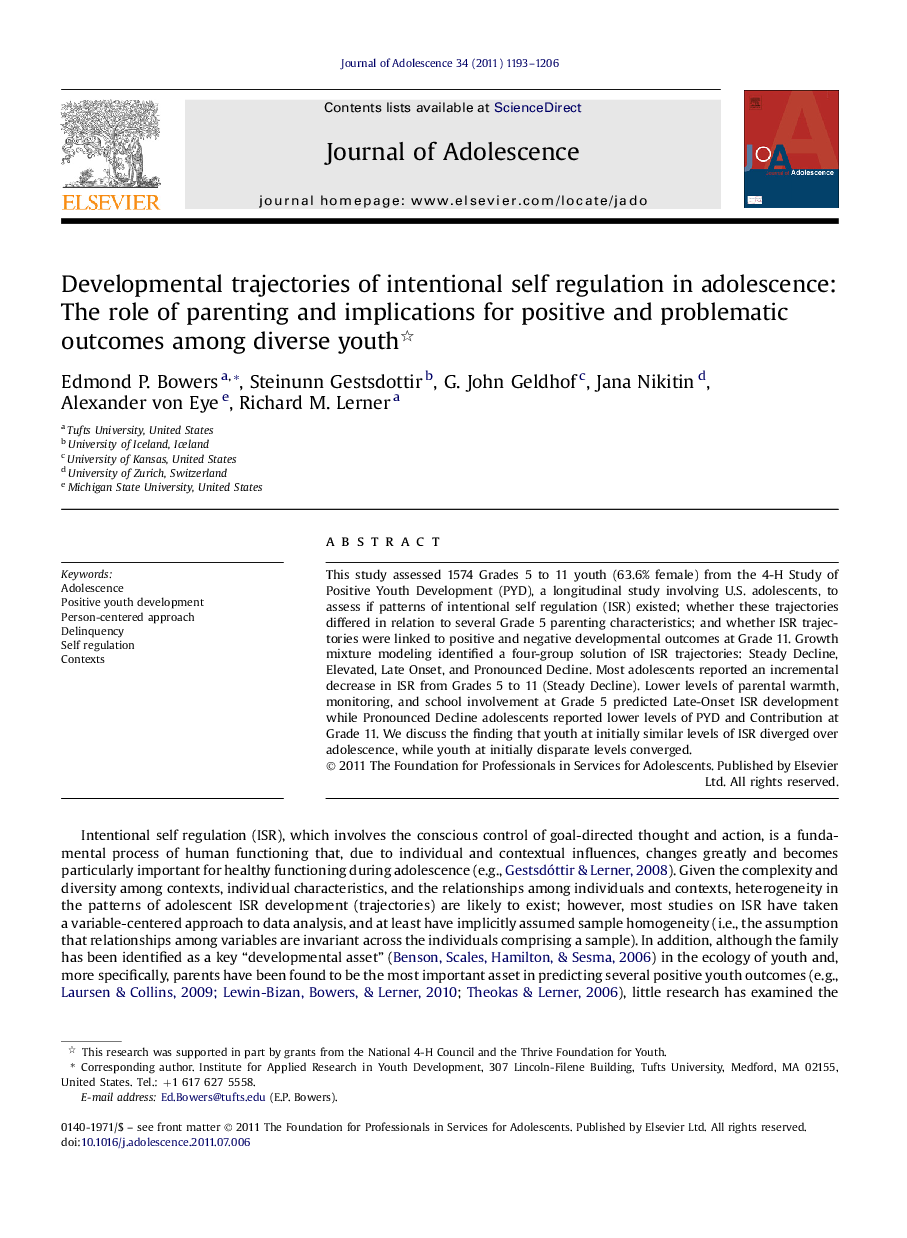| Article ID | Journal | Published Year | Pages | File Type |
|---|---|---|---|---|
| 880909 | Journal of Adolescence | 2011 | 14 Pages |
This study assessed 1574 Grades 5 to 11 youth (63.6% female) from the 4-H Study of Positive Youth Development (PYD), a longitudinal study involving U.S. adolescents, to assess if patterns of intentional self regulation (ISR) existed; whether these trajectories differed in relation to several Grade 5 parenting characteristics; and whether ISR trajectories were linked to positive and negative developmental outcomes at Grade 11. Growth mixture modeling identified a four-group solution of ISR trajectories: Steady Decline, Elevated, Late Onset, and Pronounced Decline. Most adolescents reported an incremental decrease in ISR from Grades 5 to 11 (Steady Decline). Lower levels of parental warmth, monitoring, and school involvement at Grade 5 predicted Late-Onset ISR development while Pronounced Decline adolescents reported lower levels of PYD and Contribution at Grade 11. We discuss the finding that youth at initially similar levels of ISR diverged over adolescence, while youth at initially disparate levels converged.
